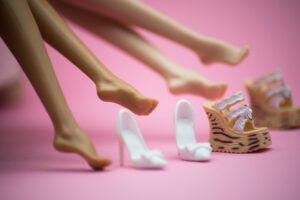When patients come into the clinic with nagging low back pain (LBP) that never seems to fully resolve even after they’ve tried everything, the next logical question is ‘what’s missing here?’ Perhaps the chances of this road block occurring can be diminished if a few simple questions are asked earlier during the patient’s course of care:
1. Do you ever have accidental loss of urine? Even just a little bit?
2. Do you have difficulty starting or stopping the flow of urine?
3. Are you unable to completely empty your bladder?
These questions can lead to further evaluation of the pelvic floor muscles (PFM). There is increasing evidence that supports the connection of low back pain and pelvic floor dysfunction, especially related to stress urinary incontinence (SUI). However, experiencing urinary incontinence is commonly written off by the general population. “Oh, it’s just a part of aging…” “Well, I’ve had babies, and this is what happens…” or even “I’m a high-level athlete and leaking is to be expected…”
When patients present with low back pain, they are typically prescribed core stabilization and Kegel exercises in order to strengthen their suspected weakened muscles. However, a growing body of evidence tells us there is a need for clinicians to differentiate between patients with LBP who have PFM weakness versus tightness. If patients have pelvic floor muscles that are always overworking (i.e. tight), their LBP and/or incontinence will usually continue to be a problem until they learn to lengthen and relax their pelvic floor muscles. Furthermore, research shows that even if weakness is the issue, many people are unable to achieve the proper timing and coordination of a PFM contraction with verbal or written instruction alone (i.e. some folks need more help, which is offered through pelvic health rehab). Dyscoordination of pelvic floor muscles with the core muscles and/or abdominal diaphragm can also cause pelvic pain, low back pain, and urinary incontinence, indicating that the muscle groups need a little extra helping synching up with one another.
Does the patient need more strength or better coordination? Are there shortened, tight muscles that need relaxation training? Are symptoms such as LBP and SUI still an issue even after the patient has been consistent with certain exercises? These questions help guide examinations in order to determine the patient’s actual functioning prior to implementing strategies of treatment. Fundamentally, low back pain can arise from many different sources. Often these sources overlap, and some can be deeply hidden within the base of the core (i.e. the pelvic floor). Understanding the connection of the lumbar spine and the pelvic girdle can help guide treatment as well as improve patient outcomes, satisfaction and, ultimately, their quality of life. Could your pelvic floor function (or dysfunction) be playing a role in your low back pain? Call today to schedule with our pelvic health specialist, Kelsea Cannon, PT.
References:
1. Urinary incontinence in women with low back pain. Eliasson K., Elfving B., Nordgren B., Mattsson E. (2008) Manual Therapy, 13(3), pp. 206-212.
2. Why are some women with pelvic floor dysfunction unable to contract their pelvic floor muscles? Kim S., Wong V., and Moore K. (2013) Australian and New Zealand Journal of Obstetrics and Gynaecology 53: 574–5 79.
3. The association of chronic back pain and stress urinary incontinence. Bush H., Pagorek S., Kuperstein J., Guo J., Ballert K., Crofford L. (2013) Journal of Women’s Health Physical Therapy. Volume 37, Number 1, January/April 2013. 11-18.






